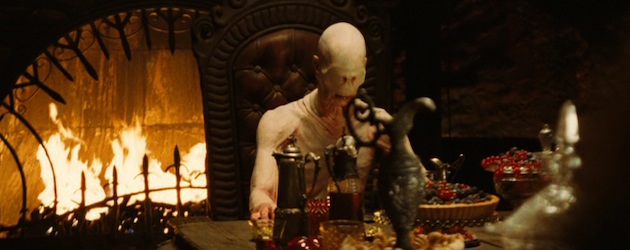Eugenio Caballero

Other than those references, I came very virgin to the design phase. The good thing was the exterior world was not really established in the films before. And the film was not really a direct reference to the video game. It’s a creature by itself. I just had fun doing it. It’s one of those shows where there is a lot of construction. All the sets are full builds. We worked in the desert which was a very good and very tough experience too. The temperatures were very high. This was before Pan’s Labyrinth got released and I wanted to do one of those studio films in Mexico with a lot of the local departments and crew that we have here. Here in Mexico, we learned a lot of our craft during the Seventies. Mexico had a big tradition of film before, back in the Fifties and Sixties. What they call the Golden Age of Mexican Cinema. But during the Seventies and Eighties it basically disappeared. A lot of people survived doing a lot of big Hollywood films that would come to Mexico. They would bring the departments heads from Hollywood and they would hire local people that were then trained in the craft of construction, decoration, scenic painting, greens, production and special effects. I really wanted to make a film here as a Mexican and to work with a lot of these local crews. That was a very important reason I took that film.
AS: Did you work with Patrick Tatopoulos on that?
EC: In the very beginning. Patrick was designing the creatures. We had some contact over the basic concepts early on.
AS: I interviewed him as a production designer -he designed some big movies and then started directing. Do you ever have the desire to start directing yourself?
EC: No. I feel very comfortable with the tools of the production designer. I don’t know if this will change -as creators everything always changes a lot! But I still have a lot of things to explore with these tools. A lot of stories to tell with these tools. Design can have a very subtle but profound influence on storytelling.
AS: Do you think design should be invisible or visible? Can it be a character in the movie?
EC: Again, it all depends which project. There are some projects which need spectacle and a big scope while there are others that really need the art department to walk side-by-side with the storytelling in a more subtle way. It all depends on the film. I tend to think that if a film has a solid concept, not just in design but in every single aspect: the cinematography, music, makeup, wardrobe, then it will always be a powerful film. Regardless if you notice the production design or not.
AS: What qualities do you think a production designer should have?
EC: First, the ability to work as a team. Second, to be able to lead a team. Your enthusiasm needs to be contagious. You have to inspire your crew to follow your dream. Each member of your team has to make a lot of decisions all the time. If they know why you need certain creative concepts defended they will make better decisions too.